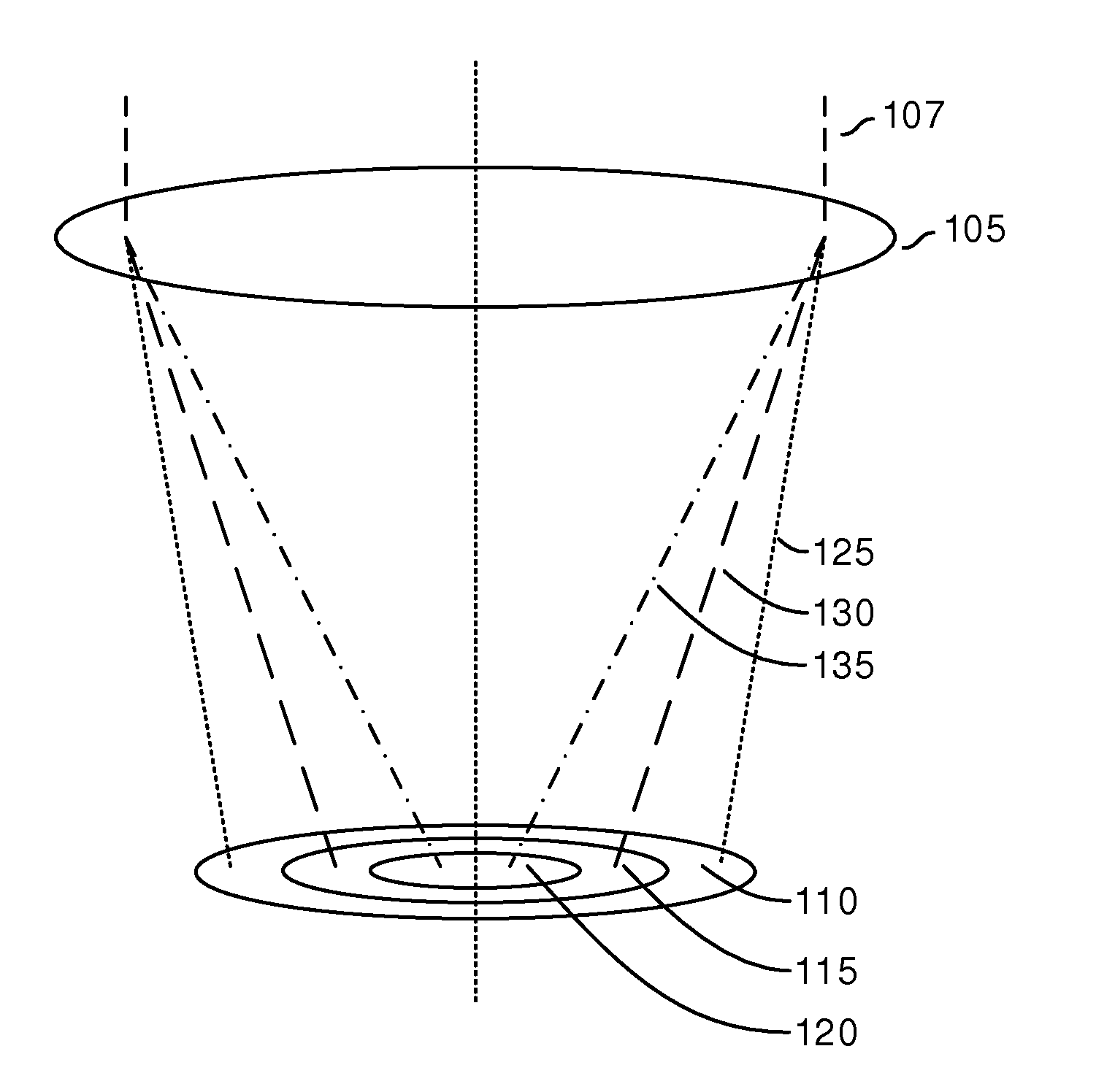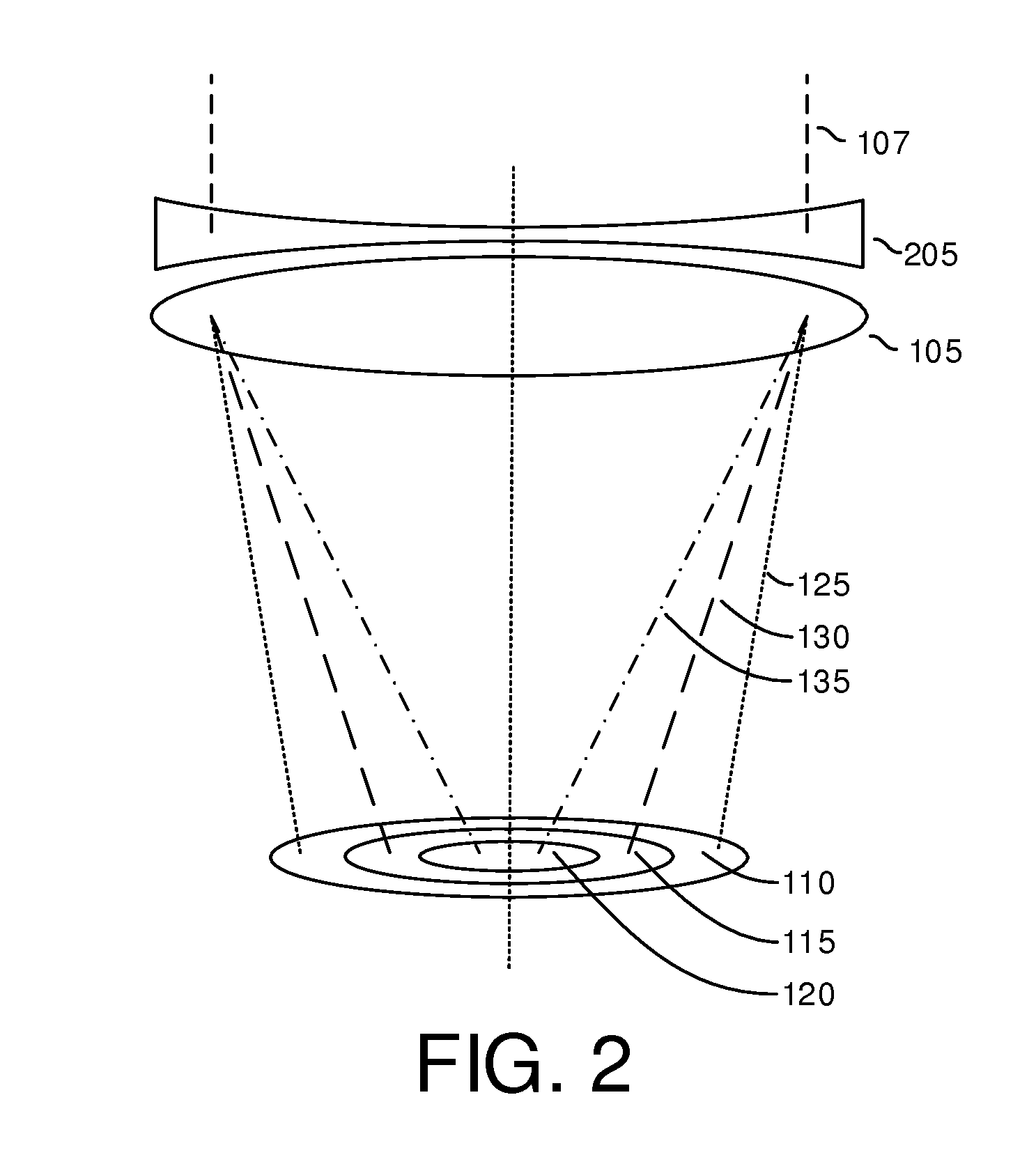Image sensor with dispersive color separation
a color separation and image sensor technology, applied in the field of solid-state image sensors, can solve the problems of reducing the sensor sensitivity in low light, increasing the noise, and reducing the sensor resolution, so as to reduce the sensor sensitivity, reduce the noise, and reduce the sensor resolution
- Summary
- Abstract
- Description
- Claims
- Application Information
AI Technical Summary
Benefits of technology
Problems solved by technology
Method used
Image
Examples
Embodiment Construction
[0017]An array of light-sensitive pixels, converting an image created by an optical system into electrical signals is the heart of modern digital imaging systems. These light-converting arrays are known in the art as image sensors. Modern image sensors usually use silicon or other semiconductor material, which are light sensitive in the broad spectrum.
[0018]In order to create color-sensitive array, the light absorbing color filters are applied above the pixels. Usually those are Red, Green and Blue filters. Each filter transmits its dedicated color and absorbs two others. Therefore the pixels covered by Red filter is sensitive to Red light and non-sensitive to Green and Blue. Similarly pixels covered by Green and Blue filters are sensitive respectively to their color, and non-sensitive to the remaining colors.
[0019]Unfortunately this solution creates many severe problems in digital imaging: Absorbing two colors out of three over every pixel reduces the amount of light reaching the s...
PUM
 Login to View More
Login to View More Abstract
Description
Claims
Application Information
 Login to View More
Login to View More - R&D
- Intellectual Property
- Life Sciences
- Materials
- Tech Scout
- Unparalleled Data Quality
- Higher Quality Content
- 60% Fewer Hallucinations
Browse by: Latest US Patents, China's latest patents, Technical Efficacy Thesaurus, Application Domain, Technology Topic, Popular Technical Reports.
© 2025 PatSnap. All rights reserved.Legal|Privacy policy|Modern Slavery Act Transparency Statement|Sitemap|About US| Contact US: help@patsnap.com



